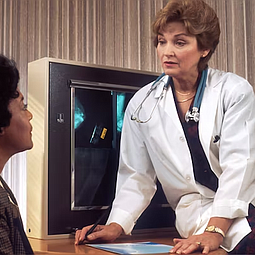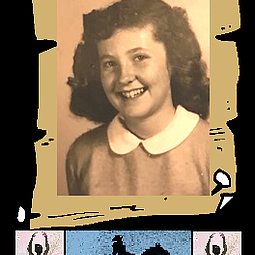Fine Tuning Cataract Surgery Paving the Way to Better Vision
October 28, 2023 at 6:24 p.m.
...by JOHN SCHIESZER
A cataract is a clouding of the lens in the eye that affects vision. Most cataracts are related to aging. Cataracts are very common in older adults. By age 80, more than half of all Americans either have a cataract or have had cataract surgery. A cataract can occur in either or both eyes.
The lens is a clear part of the eye that helps to focus light on the retina. The lens must be clear for the retina to receive a sharp image. If the lens is cloudy from a cataract, the image you see will be blurred. As we age, some of the protein may clump together and start to cloud a small area of the lens. Over time, the cataract may grow larger and cloud more of the lens.
Researchers suspect that there are several causes of cataract, such as smoking and diabetes. Cataracts may also simply be due to the protein changes in the lens from the wear and tear over the years. The symptoms of early cataract may be improved with new eyeglasses, brighter lighting, anti-glare sunglasses, or magnifying lenses. If these measures do not help, surgery is the only effective treatment. Surgery involves removing the cloudy lens and replacing it with an artificial lens.
“The definitive treatment for cataracts remains cataract surgery. There are no eye drops or supplements that can fix cataracts at this time. Lasers can be used to assist in several of the steps required for cataract surgery, but they are not covered by insurance and can cost patients several thousand dollars out-of-pocket,” said Dr Bee. “Studies have thus far not demonstrated that laser-assisted cataract surgery is any safer or more effective in terms of complication rate or visual outcomes.”
A cataract needs to be removed only when vision loss interferes with your activities of daily living, such as reading, driving, and watching TV. It is best to make the decision together with your eye care professional. In most cases, delaying cataract surgery will not cause any long-term damage to your eye or make the surgery more difficult. There is no rush to surgery.
“Cataract surgery is an elective procedure that can help patients see better while often reducing dependence on glasses or contacts. It is extremely safe and effective, so if a patient is struggling with their vision and does not feel comfortable seeing the things they need to do, cataract surgery is a great option to restore sight. Cataracts can be evaluated on an annual basis during a complete eye exam that also screens for macular degeneration, glaucoma and diabetes,” said Dr. Bee.
Wearing sunglasses and a hat with a brim to block ultraviolet sunlight may help prevent cataracts. Researchers also believe good nutrition can help reduce the risk of age-related cataracts and they recommend eating green leafy vegetables, fruit, and other foods with antioxidants. If you are 60 or older, it is recommended that you should have a comprehensive dilated eye exam at least once every two years. Early treatment for many eye diseases may save your sight.
Cataracts and LASIK Eye Surgery
Millions of people have undergone LASIK eye surgery since it became commercially available in 1989. However, these individuals sometimes develop cataracts later in life and require new corrective lenses to be implanted in their eyes. With an increasing number of intraocular lens options becoming available, scientists have developed computational simulations to help patients and surgeons see the best options.
In a study in the Journal of Cataracts & Refractive Surgery, researchers from the University of Rochester created computational eye models that included the corneas of post-LASIK surgery patients and studied how standard intraocular lenses and lenses designed to increase depth of focus performed in operated eyes. Susana Marcos, a professor of Optics and of Ophthalmology at the University of Rochester, said the computational models that use anatomical information of the patient's eye provide surgeons with important guidance on the expected optical quality post-operatively.
"Currently, the only preoperative data used to select the lens is essentially the length and curvature of the cornea," said Marcos. "This new technology allows us to reconstruct the eye in three dimensions, providing us with the entire topography of the cornea and crystalline lens, where the intraocular lens is implanted. When you have all this three-dimensional information, you're in a much better position to select the lens that will produce the best image at the retinal plane."
The most common symptoms of a cataract are cloudy or blurry vision. Colors may seem faded, and glare may be a significant issue. Sunlight may appear too bright, and a halo may appear around lights. Another common symptom is poor night vision and double vision or multiple images in one eye.

John Schieszer is an award-winning national journalist and radio and podcast broadcaster of The Medical Minute. He can be reached at medicalminutes@gmail.com.





